
Overview
The Wildlife Conservation Industry encompasses a broad range of activities, organizations, and initiatives aimed at preserving wild species and their habitats. It involves the study, protection, and management of wildlife and natural resources, aiming to prevent species extinction, habitat loss, and biodiversity decline. This industry includes various stakeholders such as government agencies, non-profit organizations, conservation biologists, environmentalists, and community groups.
Key activities within this industry involve habitat restoration, implementation of laws and policies to protect endangered species, anti-poaching efforts, and the establishment of protected areas such as national parks and wildlife reserves. Education and awareness campaigns are also crucial to changing public attitudes and behaviors towards wildlife conservation.
The Wildlife Conservation Industry relies on scientific research to understand the needs of different species and ecosystems, making informed decisions to ensure their long-term survival. It also promotes sustainable practices among communities and industries to minimize human impact on the natural world.
Depending on specific features and functions, GAO Tek’s other environmental testers are sometimes referred to as environmental sampling technicians, ecological monitoring specialists, environmental quality assessors, pollution detection experts, environmental surveillance officers, eco-testing professionals, habitat assessment technicians, environmental diagnosticians, biodiversity monitoring agents, and environmental condition evaluators.
Furthermore, GAO Tek’s other environmental testers are further grouped into air quality, circuit parameter, handheld, material quality, outdoor, soil quality, and surface hardness.
GAO Tek’s other environmental testers have the following applications in the wildlife conservation industry:
- Habitat Quality Assessment: GAO Tek’s Environmental Quality Assessors utilize a variety of testing tools to evaluate soil, water, and air quality within natural habitats. This critical data helps us identify areas of concern, such as pollution or habitat degradation, which may threaten local wildlife. By understanding these environmental variables, GAO can implement targeted conservation strategies to restore and protect these ecosystems.
- Pollution Monitoring and Mitigation: GAO’s team of Pollution Detection Experts is on the front line in detecting sources of pollution that can adversely affect wildlife. By identifying pollutants and their origins, we can work with industries and local communities to reduce or eliminate these threats, ensuring safer habitats for wildlife.
- Climate Change Impact Analysis: Climate change poses a significant threat to wildlife conservation. Our Environmental Diagnosticians employ advanced testing methodologies to study the impacts of climate change on various ecosystems. This information is crucial for GAO Tek in developing adaptation and mitigation strategies to protect vulnerable species and habitats.
- Biodiversity Monitoring: Biodiversity is a key indicator of an ecosystem’s health. GAO’s Biodiversity Monitoring Agents use environmental testing to assess the variety and abundance of species in a given area. This data allows us to monitor changes in biodiversity over time, helping to identify conservation priorities and measure the effectiveness of our conservation efforts.
- Environmental Education and Awareness: At GAO, we believe in the power of education to drive conservation success. Our Environmental Surveillance Officers not only gather vital data but also engage with the community to raise awareness about environmental issues. By sharing our findings and promoting sustainable practices, we empower individuals and communities to become active participants in wildlife conservation.
- Regulatory Compliance and Enforcement: Ensuring compliance with environmental laws and regulations is a key aspect of conservation work. Our team of Environmental Condition Evaluators works closely with regulatory bodies to monitor industry practices and enforce conservation laws. This helps to prevent illegal activities such as poaching, habitat destruction, and pollution, which can severely impact wildlife.
More information on other environmental testersand their applications in other industries can be found on other environmental testers. This category page lists related products environmental.
Systems in the Wildlife Conservation Industry Utilizing Other Environmental Testers
Habitat Quality Monitoring System
- GIS (Geographic Information System): GIS software allows conservationists to map and analyze the spatial distribution of various environmental factors, such as vegetation cover, water sources, and pollution levels. This information is critical for assessing habitat quality and identifying areas in need of protection or restoration.
- Remote Sensing Application Software (e.g., ENVI): ENVI is a remote sensing application that processes and analyzes geospatial imagery. It’s used alongside environmental testers to assess habitat changes over time, monitor deforestation rates, and detect illegal activities such as poaching or unauthorized land use.
Pollution Detection and Analysis System
- EarthSoft’sEQuIS (Environmental Quality Information System): EQuIS is a data management framework for handling environmental data, particularly for pollution assessment. It supports the collection, analysis, and reporting of environmental data, helping conservationists to track pollution sources and impacts on wildlife habitats.
- AQTESOLV (Aquifer Test Solver): AQTESOLV is software used for analyzing groundwater quality and pollution levels. It helps in assessing the impact of contaminants on aquatic ecosystems, which is vital for the conservation of species dependent on these water bodies.
Climate Change Impact Assessment System
- MaxEnt (Maximum Entropy Modeling): MaxEnt is used for modeling habitat suitability and species distributions under varying climate scenarios. It helps conservationists predict how climate change could alter habitats, guiding efforts to mitigate impacts on wildlife.
- Climate Wizard: Climate Wizard enables users to visualize future climate change scenarios based on historical data. This software is crucial for understanding potential impacts on ecosystems and species, allowing for proactive conservation planning.
Biodiversity Monitoring System
- CyberTracker: CyberTracker is used for data collection in biodiversity monitoring projects. It allows for the efficient gathering of geo-referenced observations of species, enabling detailed analysis of biodiversity trends and conservation status.
- DIVERSITY: DIVERSITY is a software package for biodiversity data analysis. It facilitates the analysis of species richness, diversity indices, and community composition, supporting conservationists in monitoring ecosystem health and species diversity.
Wildlife Movement and Behavior Analysis System
- Movebank: Movebank is a data hosting service that allows researchers to track animal movements through GPS and other tracking technologies. It aids in the study of migration patterns, habitat use, and the effects of environmental changes on wildlife.
- ZSL Instant Detect: ZSL Instant Detect is a system designed for remote wildlife monitoring, using camera traps and acoustic sensors to capture images and sounds of wildlife. The system includes software for the analysis of this data, helping to understand animal behavior and threats such as poaching.
GAO Tek’s targeted markets are North America, particularly the U.S. and Canada.
Complying with Government Regulations
GAO Tek’s other environmental testers comply or help our customers comply with the U.S. government regulations such as:
- Endangered Species Act (ESA)
- Migratory Bird Treaty Act (MBTA)
- Marine Mammal Protection Act (MMPA)
- National Environmental Policy Act (NEPA)
- Clean Water Act (CWA), Section 404 – Wetlands Regulations
- Clean Air Act (CAA) – Regulations on Air Pollutants Affecting Wildlife Habitats
- Wildlife Protection Regulations under the Federal Land Policy and Management Act (FLPMA)
- Fish and Wildlife Coordination Act (FWCA)
- Lacey Act – Regulations on Illegal Trafficking of Wildlife
- Bald and Golden Eagle Protection Act
GAO Tek’s other environmental testers comply or help our clients comply with the Canadian regulations such as:
- Species at Risk Act (SARA)
- Migratory Birds Convention Act (MBCA)
- Canada Wildlife Act
- Fisheries Act – Protection of Fish and Fish Habitat Provisions
- Canadian Environmental Protection Act (CEPA) – Toxic Substances Management
- Wildlife Area Regulations under the Canada Wildlife Act
- Marine Mammal Regulations under the Fisheries Act
- Wild Animal and Plant Protection and Regulation of International and Interprovincial Trade Act (WAPPRIITA)
- National Parks Wildlife Regulations
- Provincial/Territorial Endangered Species Legislation (varies by province/territory)
Case Studies of Other Environmental Testers in the Wildlife Conservation Industry
Other Environmental Testers are sometimes called environmental sampling technicians, ecological monitoring specialists, environmental quality assessors, pollution detection experts, environmental surveillance officers, eco-testing professionals, habitat assessment technicians, environmental diagnosticians, biodiversity monitoring agents, and environmental condition evaluators.
Here are some practical examples of using other environmental testers in the wildlife conservation industry:
Monitoring Water Quality in New England Streams. Environmental testers are used to assess water quality parameters such as pH, dissolved oxygen, and nutrient levels in streams across New England. This data helps conservationists identify pollution sources and implement strategies to protect aquatic habitats and species like brook trout and freshwater mussels.
Assessing Prairie Habitat Health in the Great Plains. Other environmental testers are utilized to analyze soil composition, vegetation cover, and pesticide residue levels in prairie ecosystems across the Midwest. By monitoring these environmental factors, conservationists can evaluate habitat health and implement management practices to support species like the American bison and prairie chicken.
Studying Coastal Erosion Impacts on Sea Turtle Nesting Sites in the Gulf Coast. Environmental testers are deployed to measure sediment erosion rates, salinity levels, and beach temperature fluctuations along the Gulf Coast. This data helps wildlife managers understand the impacts of coastal erosion on sea turtle nesting habitats and inform conservation efforts to mitigate these threats.
Monitoring Water Scarcity Effects on Desert Bighorn Sheep Populations in the Southwest. Other environmental testers are used to assess water availability, vegetation density, and temperature fluctuations in desert habitats inhabited by bighorn sheep. By monitoring these environmental variables, conservationists can identify areas at risk of water scarcity and implement measures to ensure the survival of this iconic species.
Tracking Grizzly Bear Movement Patterns in the Rocky Mountains. Environmental testers, including GPS collars and camera traps, are deployed to study grizzly bear behavior and habitat use in the Rocky Mountains. By analyzing movement patterns and habitat preferences, conservationists can identify key areas for habitat protection and minimize human-bear conflicts.
Assessing Water Quality in Pacific Salmon Spawning Streams. Environmental testers are used to monitor water temperature, pH levels, and sedimentation rates in streams critical for Pacific salmon spawning in British Columbia. This data helps inform habitat restoration efforts and ensures optimal conditions for salmon reproduction.
Studying Caribou Habitat Fragmentation in the Boreal Forest. Other environmental testers are deployed to assess forest fragmentation, vegetation composition, and predator presence in caribou habitats in Alberta’s boreal forest. By understanding the impacts of habitat fragmentation, conservationists can develop strategies to protect caribou populations from decline.
Monitoring Mercury Levels in Ontario’s Great Lakes. Environmental testers are used to measure mercury concentrations in water and fish tissue samples collected from Ontario’s Great Lakes. This data helps inform fish consumption advisories and identify areas where mercury pollution may threaten the health of wildlife and human populations.
Assessing Wetland Health in the St. Lawrence River Estuary. Other environmental testers are utilized to evaluate water quality, nutrient levels, and habitat structure in wetlands within the St. Lawrence River Estuary in Quebec. This data helps guide wetland conservation efforts and supports the recovery of species like waterfowl and marsh birds.
GAO RFID Inc.https://gaorfid.com, a sister company of GAO Tek Inc., is ranked as the top 10 RFID suppliers in the world. Its RFID, BLE, and IoT products have also been widely used in the wildlife conservation industry. Articles about related industries are given below:
Use of Other Environmental Testers with Leading Software and Cloud Services in the Wildlife Conservation Industry
GAO Tek has used or has facilitated its customers to use GAO’s other environmental testers with some of the leading software and cloud services in their applications. Examples of such leading software and cloud services include:
- LabView (National Instruments)
- AquaLab Cloud (Decagon Devices, Inc.)
- Hydrosense App (Campbell Scientific)
- SoilWeb (USDA-NRCS)
- HOBOware (Onset Computer Corporation)
- DataTrac 3 (Decagon Devices, Inc.)
- Spectrum Technologies Cloud Services
- FieldScout Mobile App (Spectrum Technologies)
- TDR 300 Soil Moisture Management Software (Spectrum Technologies)
- Moisture Analysis Software Suite (MASS)
More information on other environmental testers and their applications in other industries can be found on other environmental testers. Other related products can be found on this category page environmental.
Meeting Customers’ Demands
Large Choice of Products
In order to satisfy the diversified needs of their corporate customers, GAO Tek Inc. and its sister company GAO RFID Inc. together offer a wide choice of testing and measurement devices, network products, RFID, BLE, IoT, and drones.
Fast Delivery
To shorten the delivery to our customers, GAO has maintained a large stock of its products and is able to ship overnight within the continental U.S. and Canada from the nearest warehouse.
Local to Our Customers
We are located in both the U.S. and Canada. We travel to customers’ premises if necessary. Hence, we provide very strong local support to our customers in North America, particularly the U.S. and Canada.
Furthermore, we have built partnerships with some integrators, consulting firms, and other service providers in different cities to further strengthen our services. Here are some of the service providers in the wildlife conservation industry. We have worked with to serve our joint customers:
- Esri (Environmental Systems Research Institute)
- Accenture Federal Services
- Wildlife Computers
- IBM Corporation
- Oracle Corporation
- Tech Mahindra
- CGI Group
- Deloitte Consulting LLP
- PricewaterhouseCoopers (PwC)
- SAS Institute Inc.
- Microsoft Corporation
- HP Enterprise Services
- Conservation International Technology Partners
- Tetra Tech
- AECOM Technology Corporation
GAO has Many Customers in the Wildlife Conservation Industry
The products from both GAO Tek Inc. and GAO RFID Inc. have been widely used in the wildlife conservation industry by many customers, including some leading companies. Here is more information on applications of GAO RFID Inc.’s products in the wildlife conservation industry. Articles about related industries are given below:
Here are some of GAO’s customers in the wildlife conservation industry:
- Appalachian Mountain Club
- Audubon Society – Various locations
- Canadian Wildlife Federation
- Conservation Fund – Arlington, Virginia
- Defenders of Wildlife
- Ducks Unlimited – Locations in various states
- Ducks Unlimited Canada
- National Wildlife Federation – Various locations
- Nature Conservancy of Canada
- Pheasants Forever and Quail Forever – Saint Paul, Minnesota
- Save the Redwoods League – California
- Sea Turtle Conservancy – Florida
- Sierra Club – San Francisco, California
- The Nature Conservancy – Various locations
- The Prairie Enthusiasts
- Wildlife Conservation Society (WCS) – New York
- Wildlife Conservation Society Canada
- Yellowstone to Yukon Conservation Initiative (Y2Y)
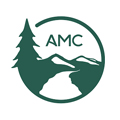
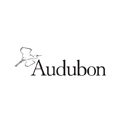

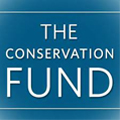
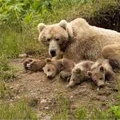
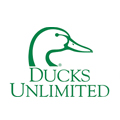

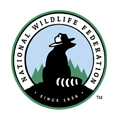
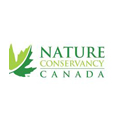
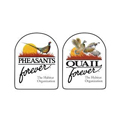

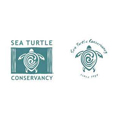
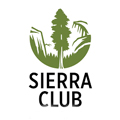

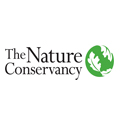

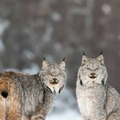

Contact Us
Here are GAO Tek’s other environmental testers and they are further organized by feature: air quality, circuit parameter, handheld, material quality, outdoor, soil quality, and surface hardness.
If you have any questions about our products or want to place an order, our technical experts can help you. Please fill out this form or email us.
